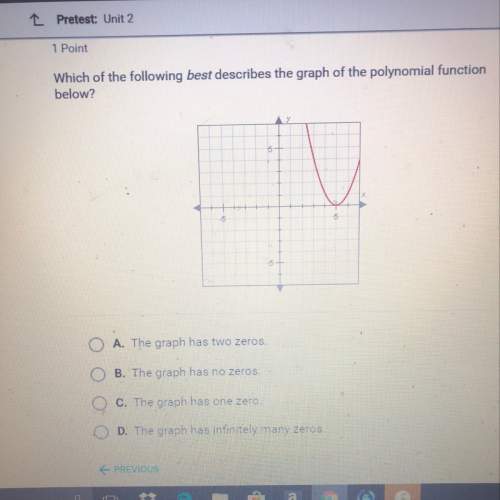
Mathematics, 10.03.2020 01:57, sparky1234
Assume that a population of interest has a uniform distribution on the interval [0, θ], where θ is an unknown parameter we wish to estimate. Let {X1, X2, …, XN} be a random sample of data drawn from the population, and define the random variable Y = Max {X1, X2, …, XN}. Y is frequently used as an estimator for θ. Calculate the bias of Y. (Hint: Determine the distribution function of Y, and use this information to calculate the associated density function.) Note: If random variable X has a uniform distribution on the interval [a, b], the density function fX (z) = 1/(b – a) for all z ϵ [a, b]; fX (z) = 0 for all other z.

Answers: 3
Other questions on the subject: Mathematics


Mathematics, 21.06.2019 22:30, HappyPom4169
]supplementary angles are two angles that add up to . • complementary angles are two angles that add up to degrees. • adjacent angles share a and a • congruent angles have the measure. • an triangle has one angle that is greater than 90 degrees. • a triangle with angles 45°, 45°, and 90° would be a triangle
Answers: 2

Mathematics, 22.06.2019 02:00, SoccerHalo
Milk and ice cream are mixed together for a recipe. the total volume of the mixture is 1 cup. if the milk contains 2% fat, the cream contains 18% fat ,and the mixture contains 6% fat ,how much cream is in the mixture
Answers: 1

Mathematics, 22.06.2019 03:00, lucypackham9
(: the two box-and- whisker plots below show the scores on a math exam for two classes. what 2 things do the interquartile range tell you about the two classes?
Answers: 2
Do you know the correct answer?
Assume that a population of interest has a uniform distribution on the interval [0, θ], where θ is a...
Questions in other subjects:

English, 06.11.2020 18:50

History, 06.11.2020 18:50


Social Studies, 06.11.2020 18:50

English, 06.11.2020 18:50



History, 06.11.2020 18:50

Mathematics, 06.11.2020 18:50







